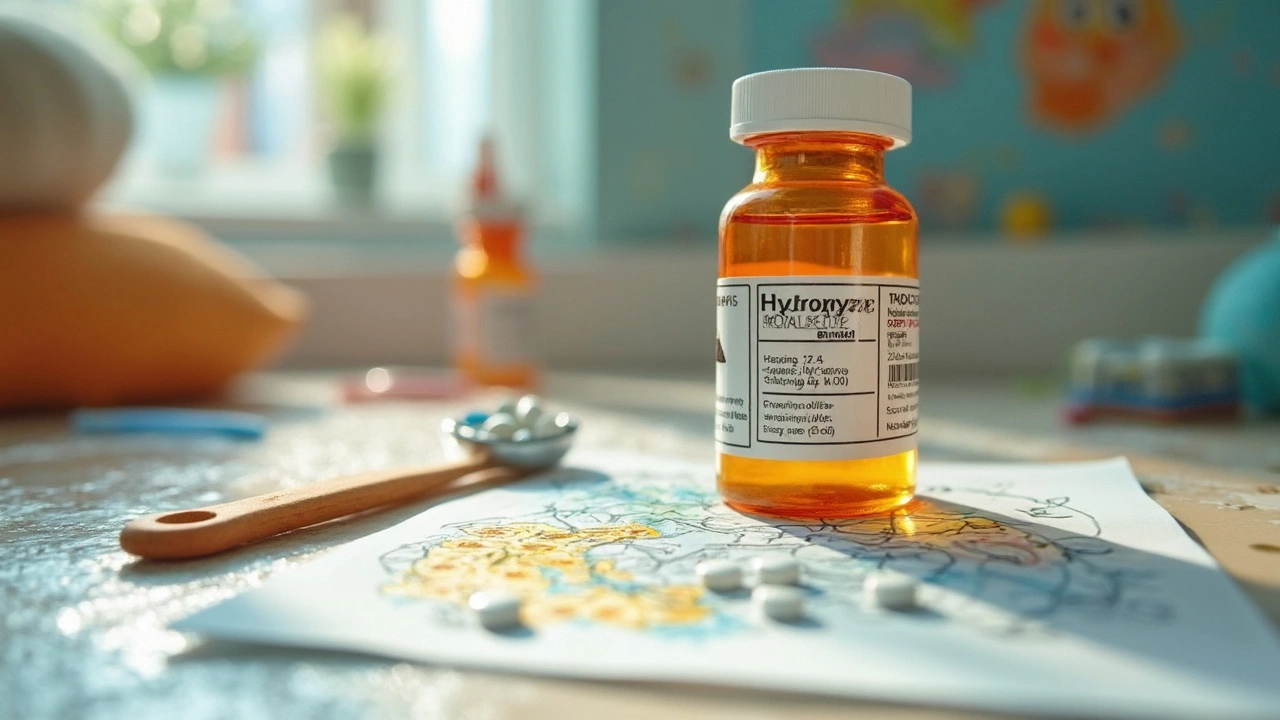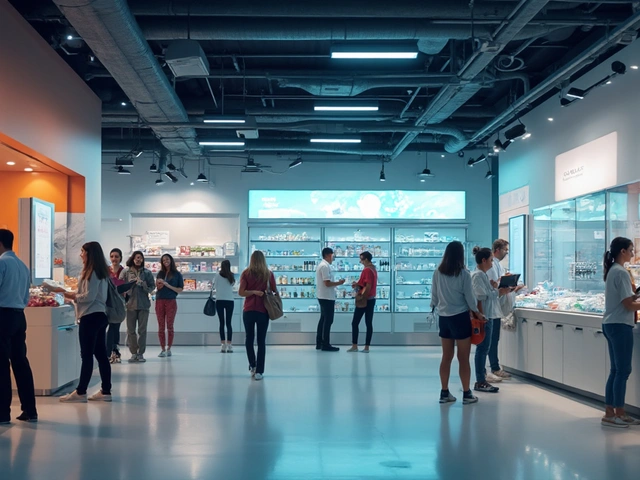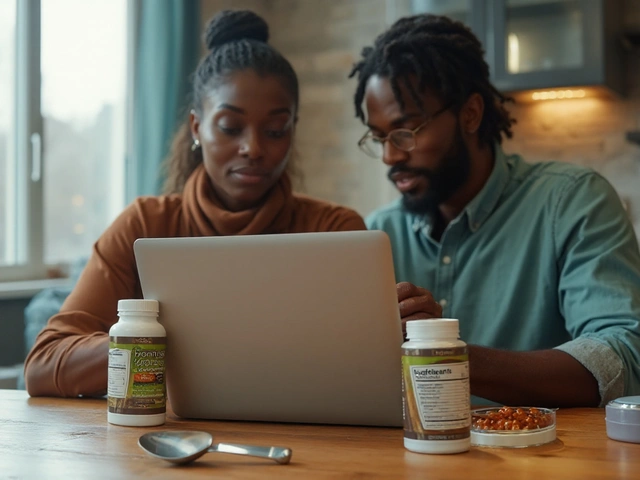Parents know the struggle—getting your child to actually swallow their medicine can feel like winning the lottery. Hydroxyzine, prescribed for allergies, anxiety, and itching in kids, comes in two main forms: syrup and tablet. But the difference between these two isn’t just about taste or texture. Sometimes, picking the right formulation can mean the difference between a calm bedtime and a midnight meltdown. With more kids needing medication for skin conditions and allergies—including eczema and hives—knowing your options can save you serious headaches, not to mention frantic calls to the pharmacy.
How Hydroxyzine Works in Kids: The Basics
Hydroxyzine is an antihistamine, but it’s not your average allergy tablet. In kids, it helps control allergic reactions, reduce itching, and in some cases settle nerves before surgery. The interesting thing is, it’s effective regardless of whether it comes as a syrup or tablet—the active ingredient doesn’t change. But how it works in a squirmy toddler or a defiant teenager depends a lot on the format you pick.
First, there’s onset of action. Both forms usually kick in within 15 to 30 minutes, which is pretty fast compared to other meds. However, syrup may get absorbed even quicker because it doesn’t have to break down in the stomach first. But the real difference starts with how children actually take these meds. A 5-year-old who can’t swallow tablets isn’t going to suddenly learn just because you’re desperate. A syrup, with its sweet taste, slides down easier and lets you adjust the exact dose—even as little as a half-teaspoon. On the other hand, tablets can be split, but you have to be very careful about dividing the dose equally, especially when the tablets aren’t scored.
Tablets tend to be more stable for longer. Syrups can go off after opening, so you have to remember those annoying "store in the fridge" instructions. The expiry date isn’t just for show—expired syrup can lose potency or breed bacteria, which is just what you don’t want around a sick child. For parents who travel or send kids to grandma’s for the weekend, tablets win for sheer convenience—no leaky bottles in overnight bags, no sticky messes.
Both forms come in different strengths, but not every pharmacy stocks each one, which is another thing to consider. You might find yourself driving across town for the right syrup concentration depending on your child’s weight and age. Sound trivial? Not when your toddler launches themselves across the room at the mere sight of a medicine spoon. If you ever need to double-check the pediatric hydroxyzine dose based on weight, having reliable info on hand makes life easier.
Now here’s something that surprises a lot of parents: kids process medicines differently depending on their age. The syrup might hit harder or wear off sooner in toddlers. Some kids metabolize the active ingredient super quickly. Ever given a dose at bedtime and your child is wide awake three hours later? Yup, that might be why. Tablets, being time-released in rare cases, can have more predictable effects, but only when dosed exactly right. That’s not easy to achieve with kids who are growing fast and always changing weight.
Check out this handy table for a quick rundown of the main practical differences:
| Factor | Syrup | Tablet |
|---|---|---|
| Ease of swallowing | ✓ Great for young kids | Not for children under 6 |
| Adjusting dose | Accurate with measuring syringe | Hard to split evenly |
| Shelf life | Shorter, needs fridge | Long, doesn't need fridge |
| Onset of action | Usually quicker | 20–30 minutes |
| Portability | Spills easily | Easy to carry |
| Taste | Sweet, flavored | Bland or bitter |
| Allergies to additives | Possible from colorings/flavors | Fewer additives |
Short version: if your child is super picky or under 6, syrup is often the way to go. For older kids who can swallow tablets, the pros start stacking up. Ask your pharmacist about sugar-free options for syrups if your child has diabetes or you’re worried about tooth decay. A lot of parents also like to use oral syringes for precise measuring—it’s way better than a kitchen spoon, which can be off by as much as 50% between doses.

The Real Pros and Cons of Syrup vs. Tablet
Here’s the real-world truth—sometimes, the “right” choice comes down to your morning routine, not just science. Syrups are fast for most kids. They come in flavors like orange or strawberry, which helps if your child gags or spits out pills. With a little patience, you can teach a child to drink out of a special medicine cup. Be ready for the mess, though. Syrups tend to stain clothing, bedding, and carpets—seriously, avoid giving doses on your new white sofa.
Yet, all those colors and sweeteners aren’t just there for taste—some children might react to the dyes or preservatives in syrup forms, especially if they have allergies or eczema. Tablets avoid most artificial additives and contain fewer inactive ingredients. For a parent of a child with allergies (the kind that made you visit the doctor for hydroxyzine in the first place) this is huge. Less chance of a flare-up from something as simple as a coloring agent.
There’s another thing—dosing accuracy. Liquid syrups win hands-down here for children under 6, especially those under 20kg. An oral syringe or medicine spoon can deliver the exact number of milliliters, and you can check the dose against your child’s weight each time. The catch? Measuring in the middle of a tantrum can be tricky. If your child loves to spit or “accidentally” knocks things over, you can lose half the dose before you even notice. Measuring after a spill is nearly impossible—you can’t scoop medicine off the floor sterilely. Tablets, however, let you pre-cut doses and keep them in a pill box, so older kids who want independence can manage their own meds. This works well for teens, especially those already taking daily allergy tablets.
Cost is another overlooked issue. Tablets are, in most cases, cheaper per dose and more likely to be covered by insurance or subsidized pharmacy programs in the UK. Syrups, on the other hand, can be surprisingly pricey, especially if your child needs multiple daily doses over a few weeks for chronic skin conditions or recurring allergies.
Some tips parents have shared: If your child is set against liquid, crush the tablet and mix it with a bit of food like applesauce or yogurt. The taste isn’t great, but it’s a reliable workaround. Still, this should be double-checked with your doctor or pharmacist—some tablets aren’t designed to be crushed, and the absorption can change. In many cases, the official advice is to avoid crushing tablets, but desperate times call for kitchen creativity.
Few parents realize just how important the delivery method is until they face a dosing emergency. A study published in the Archives of Disease in Childhood tracked common medication errors at home, and found syrups were more likely to be overdosed. The standard kitchen spoon people use can deliver almost double the intended amount. Always use a marked medicine syringe (the kind your pharmacist gives out for free). For tablets, mix-ups happen if the prescription gets replaced with a higher strength at refill time. Suddenly, the "half a tablet" routine becomes a full tablet, and the dose doubles. Watch for changes in tablet shape or color as a signal to double-check what you’re giving.
One more real-life advantage: travel. Families going on holiday find tablets way less hassle. No leaky bottles in luggage, and you don’t have to worry about trip length and refrigeration. But try giving a 3-year-old a tablet on a plane—cue the in-flight meltdown.

Choosing What’s Best: Individual Factors and Expert Advice
So, which to pick: syrup or tablet? The answer is rarely straightforward, but you can work out the best option by considering your child’s age, their preferences, allergies, your day-to-day routines, and how good you are with measuring and managing medications. Doctors usually recommend syrup for younger kids and those who can’t swallow pills, but tablets become a better pick if your child is over 6 and wants more privacy or routine in their medication schedule.
Kids with food allergies or diabetes might be sensitive to certain ingredients in syrups. Always check with the pharmacy or use the information leaflet to read up on inactive ingredients. If you’re ever unsure how much to give for your child’s age or weight, go straight to trusted sources or ask your pharmacist about the pediatric hydroxyzine dose. The right info can prevent the kind of mistake that lands you at A&E at midnight because your child is bouncing off the walls (or too sleepy).
The pharmacist is your best friend here. They’re used to dealing with last-minute panicked requests, and they can show you how to use medicine syringes and check compatibility if you want to mix a tablet with soft food. In the UK, most NHS prescribers stick to lower-dose syrups for the youngest children, but will swap to tablets by age six or when the child can confidently swallow. Still, some children – like those with sensory issues or who are fussy eaters – might refuse both forms, and creative solutions become a matter of trial and error.
Looking for a shortcut? Here are concrete steps parents and carers swear by:
- Teach kids to swallow tablets with small sweets first (think mini Smarties or Tic Tacs).
- Use a medicine syringe instead of a spoon for syrup—aim for the inside of the cheek to reduce gag reflex.
- Check the expiry every time you open a new syrup, and refrigerate if required by the label.
- If you accidentally miss a dose, don’t double up—just return to the regular schedule, and watch for unexpected drowsiness.
- If your child spits out the syrup, don’t rush to replace it—wait 30 minutes and offer again if needed, unless you have specific instructions from your doctor.
If you need tailored advice on dosing or safety, especially if your child is on other medicines or has underlying health issues, check the expert recommendations or visit a trusted pharmacy website. You can always find up-to-date, kid-specific facts at reliable sources—not random forums. When in doubt, bookmark the guide to pediatric hydroxyzine dose so you’re ready in a pinch.
The bottom line? There’s no magic answer for every child, but knowing the pros and cons means you can avoid most of the big pitfalls. Whether it’s syrup stains or tricky tablets, being prepared helps you—and your kiddo—breathe easier.






Comments
Jon Shematek
3/Jun/2025Syrup beats tablets when your kid’s a total pill‑hater!
Beverly Pace
3/Jun/2025Adding sugar and artificial flavors to a child’s medication is basically feeding them poison under the guise of “tasty” relief; we should demand sugar‑free formulations for every pediatric antihistamine.
RALPH O'NEIL
3/Jun/2025Both syrup and tablet have their pros – syrup’s easy dosing for the little ones, tablets’ longer shelf life and portability for older kids.
Mark Wellman
3/Jun/2025I’ve been down the syrup‑vs‑tablet road a dozen times, and let me tell you, it’s a circus of dosage calculations and parental panic. You start with the sweet‑smelling bottle, think you’ve won, then the kid decides the spoon is a weapon and flings half the dose onto the floor. Cleaning up that sticky mess while trying to figure out if you’ve given enough is like solving a Rubik’s Cube blindfolded. On the other side, the tablet sits smugly in a pillbox, promising precision, but then you discover the tablet isn’t scored and you end up with an uneven half‑pill that tastes like chalk. Kids have a sixth sense for uneven medicine and will spit it out faster than you can say “pharmacy”. The pharmacy label might say “store in refrigerator after opening,” and you’re left scrambling for fridge space in a hotel room during a vacation. Meanwhile, the tablet just chills on the nightstand, no cooling required, no risk of bacterial growth, and you can toss it in a backpack without fearing a spill. But the real kicker is the cost factor – syrup often costs double per milliliter compared to a bulk pack of tablets, especially when insurance doesn’t cover the liquid form. And don’t get me started on the hidden sugars and dyes that turn a harmless antihistamine into a potential trigger for a rash in a child already battling eczema. Pharmacists will tell you that sugar‑free syrups exist, but they’re about as rare as a unicorn in a vending machine. If you’re willing to crush a tablet and mix it into applesauce, you might dodge the flavor issue, but you’re also risking altered absorption and possibly a legal warning from the doctor. I’ve seen parents get a surprise call from the ER because the child received a double dose after a refill switched the tablet strength without a clear label change. And let’s not forget the legal nightmare of using an unapproved crushing method when the medication label explicitly says “do not crush”. The bottom line is that each form has a hidden set of trade‑offs that only surface after you’ve lived through at least three dosing mishaps. So, arm yourself with a good measuring syringe, double‑check expiration dates, and maybe keep a spare tablet in the car for emergencies. Otherwise you’re just juggling fireflies in the dark, hoping one doesn’t bite.
Amy Morris
3/Jun/2025Reading that felt like a roller‑coaster of validation and frustration; the drama of spilled syrup and the silent betrayal of an uneven tablet really hits home. It’s heartbreaking to watch a child’s face twist in pain because of a hidden dye, and equally infuriating when a well‑intentioned crush turns into a medical nightmare. I’ve been there, clutching the medicine syringe, praying the dose is spot‑on while the clock ticks toward bedtime.
Francesca Roberts
3/Jun/2025Oh sure, just pop the tablet in a glass of water and hope it dissolves – because that’s never caused a mess in anyone’s kitchen, right? Also, I’m guessing you missed the part where the pharmacy charges you extra for a “free” measuring syringe.
Becky Jarboe
3/Jun/2025From a pharmacokinetic perspective, the liquid formulation offers a quicker Tmax, but the bioavailability isn’t dramatically different in the pediatric population; thus, the decision matrix should prioritize adherence over marginal pharmacologic variance.
Carl Boel
3/Jun/2025Honestly, the American market should set the standard here – we need stricter regulations on pediatric excipients and mandatory sugar‑free options; it’s about time our meds reflect our values of health over profit.
Shuvam Roy
3/Jun/2025Dear parents, please ensure that the medication is stored according to the label instructions, and always verify the dosage with a calibrated syringe; this practice reduces the risk of dosing errors significantly.
Jane Grimm
3/Jun/2025It is incumbent upon caregivers to recognise the perils inherent in the administration of sugar‑laden syrups to paediatric patients, particularly those with pre‑existing metabolic disorders; consequently, a sugar‑free alternative should be pursued with alacrity.
Nora Russell
3/Jun/2025The discourse surrounding liquid versus solid dosage forms often neglects a rigorous cost‑benefit analysis; a granular examination reveals that the marginal convenience of syrup is frequently offset by increased wastage and ancillary expenses.
Craig Stephenson
3/Jun/2025Look, if your kid can handle a pill, just give the tablet – it’s cheaper, lasts longer, and you won’t have a sticky kitchen disaster.
Tyler Dean
3/Jun/2025Big pharma doesn’t want you to know that the “convenient” syrup is a way to keep you buying more product faster, because the shelf‑life is intentionally short.
Susan Rose
3/Jun/2025Just a heads‑up: if you’re traveling internationally, some countries don’t stock pediatric hydroxyzine syrup, so bring enough tablets and a good crusher.
diego suarez
3/Jun/2025Whether you choose syrup or tablets, the key is consistency – give the medication at the same time each day and keep a log to track any side effects.
Eve Perron
3/Jun/2025When evaluating the two delivery systems, one must consider not only the pharmacodynamic profile but also the psychosocial impact on the child; the bright, fruity flavor of a syrup can act as a positive reinforcement, yet the inevitable staining of clothing and bedding introduces a hidden source of anxiety for both parent and child alike, whereas the neutral, unflavored tablet, though less appealing at first glance, often mitigates the risk of inadvertent over‑consumption due to its measured, discrete nature; this dichotomy underscores the necessity for individualized care plans that balance efficacy, safety, and lifestyle considerations.
Josephine Bonaparte
3/Jun/2025Yo, grab a proper medicine syringe, double‑check the concentration, and if your kid complains about the taste, mix it with a spoonful of yogurt – works every time!